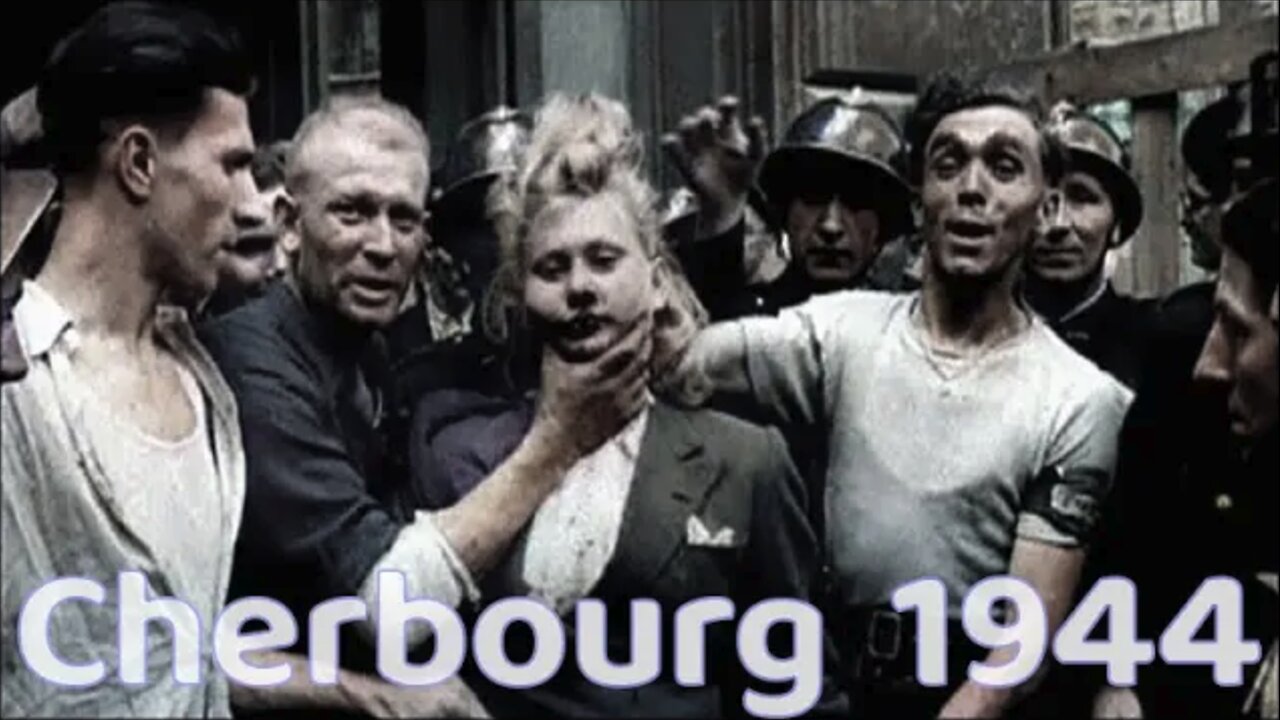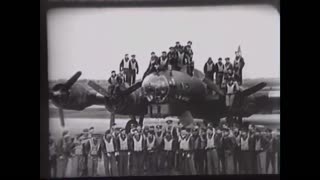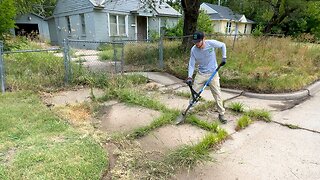Premium Only Content

REPRISALS against French women after liberation in 1944
🔥PREVIEW ALL YOUTUBE VIDEOS
www.Patreon.com/Military1945
Episode 267
Be sure to give this video a THUMBS UP! Best way to support the channel!
SUBSCRIBE to M1945
https://www.youtube.com/channel/UCN2UQVe6Xaqz5rLFaWq8-mw?sub_confirmation=1
This footage was taken in the French city of Cherbourg in 1944 just after its liberation. It shows some of the reprisals taken against French women who were seen to have collaborated with the enemy. At the end I’ve added some related color German footage taken in occupied France in 1940, so stick around it’s worth it, I promise.
In the aftermath of World War II, particularly following the liberation of France in 1944, the atmosphere was charged with anger, and many felt betrayed by those who had sided with the occupiers. As a result there were widespread reprisals against such individuals. This phenomenon was particularly visible in towns such as Cherbourg, which saw significant collaboration during the German occupation.
Cherbourg, strategically located in Normandy was a key port city and a strategic military location. Its position made it important for both the German military and Allied forces which heightened the stakes of collaboration. The German occupation authorities ran large propaganda campaigns aiming to encourage economic cooperation and feelings of friendship. But the policy towards their soldiers regarding fraternization with French civilians was complex and often contradictory.
Initially, following the fall of France in 1940, there was some encouragement for German soldiers to interact with the local population in order to foster a sense of cooperation and to maintain order. However, this was highly contextual and varied over time and by location.
As the occupation progressed, the official policy became more restrictive, reflecting concerns about the implications of fraternization. The German command feared that close relationships between soldiers and French civilians could undermine morale among troops, lead to mixed relationships that could cause complications, or even foster resistance against the occupation.
With the occupiers having disrupted the traditional economic structures, some individuals found opportunities to profit through black market activities, provisioning German troops, or gaining employment within the occupation administration.
This scene shows the rounding up of French civil servants who had been working for the German occupational regime.
Often those who had more before the occupation were more willing to work within the new German system because they had more to lose and more to gain. One example was the introduced system of Aryianization which involved the systematic dispossession of Jewish individuals and the transfer of their property and businesses to non-Jewish ownership. French civilians who were willing to cooperate with the authorities could gain possession of such assets. During the occupation approximately 90,000 French jews were killed which was made possible by the cooperation of French nationals.
On an individual level, willing women were able to gained access to a more secure and comfortable lifestyle if they managed to pair up with the right “protector”. It was common for German soldiers to have a wives back home in Germany and French mistresses. Many women who had been accused of collaborating with the enemy, often referred to as "collabos,” faced brutal treatment from the local populace, fueled by a collective desire for retribution and justice which led to public humiliation, violence, and even execution in some cases. These acts were not only physical but also a means of symbolically cleansing the community from the stain of collaboration.
Of course taking part in such public reprisals was a way for individuals to point their finger at another, and thus claim themselves to be innocent. Those of weak moral character were more susceptible to collaborate with the enemy and also to be those involved in such public reprisals.
The phenomenon of reprisals against collaborationists extended beyond physical violence and shaming. Some faced formal judicial processes where they could be sentenced for their actions during the occupation. Many faced social ostracism, and found it difficult to reintegrate into their communities.
-
 8:25
8:25
Military1945
1 month agoDie Wehrmacht 1944 Nr 4 Pt 2 - Air Defence - Flak 88 - FW 190 - Me 109 - Goering - 8th Air Force
651 -
 23:28
23:28
CatfishedOnline
23 hours agoVictim Finds Out Both His Internet Girlfriends Are Romance Scammers!
14.8K8 -
 23:47
23:47
Fit'n Fire
21 hours ago $1.26 earnedThe Truth About the *NEW* Springfield Kuna | First 300+ Rounds
12.7K3 -
 21:48
21:48
JasminLaine
19 hours agoRoom Goes DEAD SILENT After Poilievre RIPS Into Mark Carney—Even CBC Can't Defend Him
16.7K20 -
 1:47:36
1:47:36
TheDozenPodcast
20 hours agoThe Islamic threat people are too FRIGHTENED to discuss: Bob of Speakers’ Corner speaks out
13.3K10 -
 9:54
9:54
GBGunsRumble
13 hours agoOsight S and Osight X Introduction
13.3K2 -
 29:17
29:17
The Why Files
17 hours agoSTRIPPED: Proving the Afterlife | The Scole Experiments
55.2K38 -
 8:00:00
8:00:00
SpartakusLIVE
15 hours agoDuos w/ Oakboi || The Ultimate WZ Taterfarm
71.4K1 -
 28:36
28:36
SB Mowing
3 days agoShe Couldn’t AFFORD to Keep It Clean Anymore, So I Stepped In
44.6K19 -
 7:54:04
7:54:04
MyronGainesX
1 day ago $38.57 earnedOKC Bombing 30 Years Later, Vitaly And Somali Trouble, Durk Case Dissmissal, And MORE!
164K35